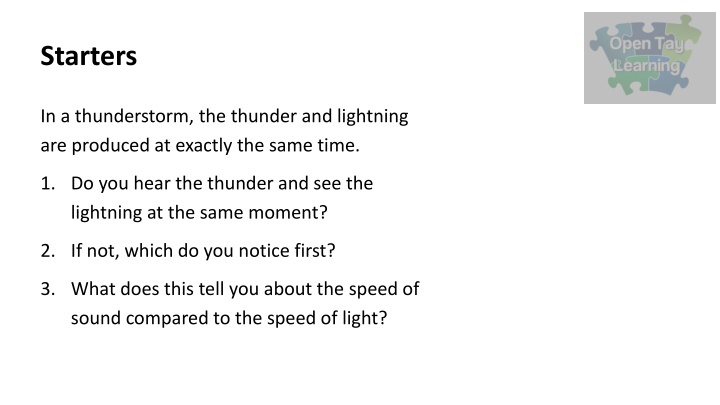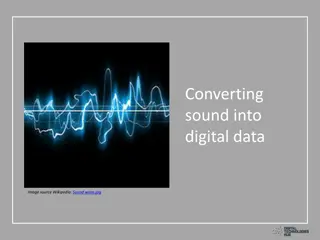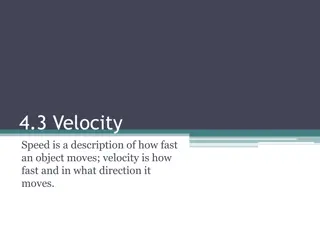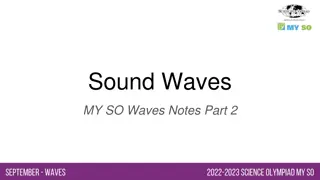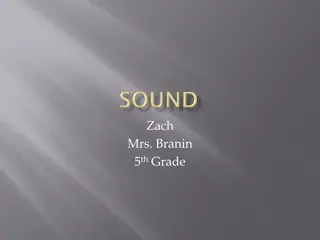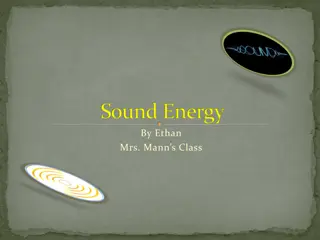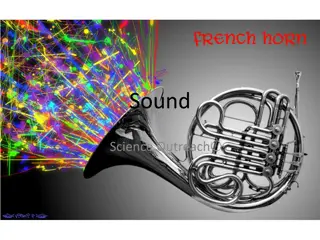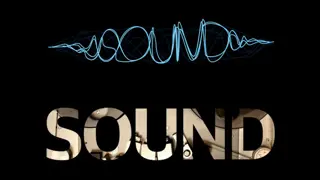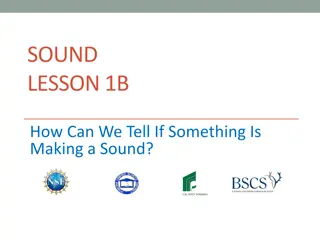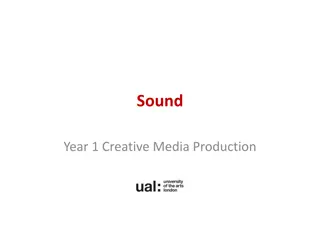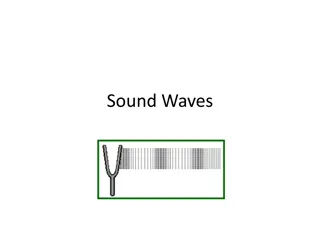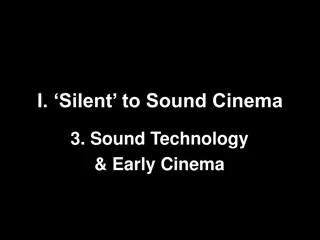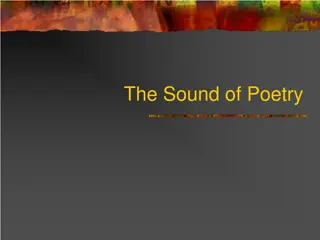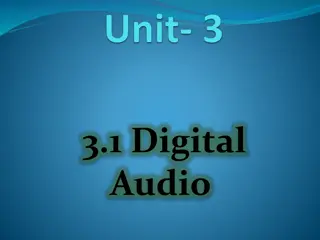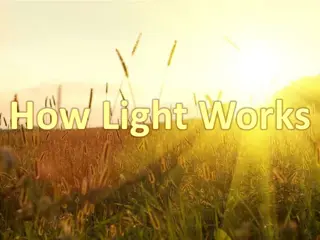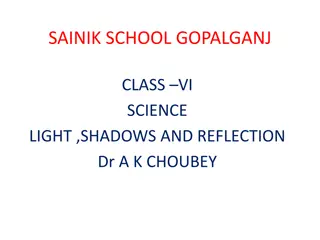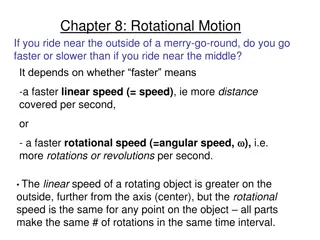Speed of Sound vs. Speed of Light
In nature, phenomena like thunder and fireworks teach us about the contrasting speeds of sound and light. Explore the relationship between these speeds, the production of sound, and the mediums through which sound travels. Discover how sound travels through air, solids, and liquids, illustrating the dynamic nature of sound propagation.
Download Presentation

Please find below an Image/Link to download the presentation.
The content on the website is provided AS IS for your information and personal use only. It may not be sold, licensed, or shared on other websites without obtaining consent from the author.If you encounter any issues during the download, it is possible that the publisher has removed the file from their server.
You are allowed to download the files provided on this website for personal or commercial use, subject to the condition that they are used lawfully. All files are the property of their respective owners.
The content on the website is provided AS IS for your information and personal use only. It may not be sold, licensed, or shared on other websites without obtaining consent from the author.
E N D
Presentation Transcript
Starters In a thunderstorm, the thunder and lightning are produced at exactly the same time. 1. Do you hear the thunder and see the lightning at the same moment? 2. If not, which do you notice first? 3. What does this tell you about the speed of sound compared to the speed of light?
Speed of sound Learning intentions: I will learn that sound travels at different speeds in different materials; measure the speed of sound in air; use the relationship between speed, distance and time to calculate the speed of sound.
Success criteria I can give an example which shows that the speed of sound in air is less than the speed of light in air. I can describe a method for measuring the speed of sound in air using the relationship between distance, time and speed. I can calculate the speed of sound using: ????? =???????? ????
At a firework display, you see the rocket explode before you hear the bang. What does this tell you about the speed of sound compared to the speed of light? Sound travels fast, but light travels faster.
Use the data sheet to find the speed of sound in air and the speed of light in air. The speed of sound in air is 340 ms-1.
Complete this key point: The speed of sound is ________ than the speed of light.
The air is made up of many tiny particles. When sound is created, the air particles vibrate and collide with each other, causing the vibrations to pass between air particles. The vibrating particles pass the sound through to a person s ear and vibrate the ear drum. How is sound produced?
Does the medium affect the speed of sound? We know that sound can travel through gases after all, you hear people speaking because the sound travels through the air to your ear. But can sounds travel through solids and liquids?
Any material in which a sound wave moves is called a medium.
Does the medium affect the speed of sound? The diagram below represents the particle arrangement for an ice cube (solid) changing to water (liquid) then steam (gas). By thinking about the arrangement of the particles, do you think sound will travel fastest in a solid, or liquid or gas? Explain your answer.
Experiment Put your ear against one end of your desk. Get your partner to gently scratch the other end of the table. Describe what happened.
Does the medium affect the speed of sound? Sound travels slowest through gases and fastest through solids. Sound cannot move in empty space because there are no particles.
Does temperature affect the speed of sound? Purpose To determine how the speed of sound is dependent on the temperature of the medium. Motivation for this study Musicians: try playing an (accurately tuned) instrument in the freezing cold; the intonation will be completely off. Effect is most apparent with brass instruments. Then warm the instrument up again without retuning, the intonation is fine again. Why?
Does temperature affect the speed of sound? As the temperature of a substance increases, its atoms and molecules move faster. Molecules and atoms collide more often at higher temperatures. If the particles in a medium are colliding more often, sound waves can move faster. As the temperature of a medium increases, sound waves move faster through the medium.
Speed of sound The speed of sound is calculated using this relationship: ????? ?? ????? =???????? ????????? ???? ????? ? =? ? v - speed, metres per second (ms-1) d - distance, metres (m) t - time, seconds (s)
Examples Two pupils stand 85 metres apart. One pupil hits two blocks of wood together and the other pupil records a time of 0.25 second between seeing the blocks hit and hearing the sound. Calculate the speed of sound that the pupils obtain.
The following apparatus was set up to measure the speed of sound. 1. Describe how you would use this equipment to measure the speed of sound. 2. If the distance between the hammer and microphone was increased, would this give you a more accurate or less accurate result? Explain your answer.
The student records the measurements shown in the table. Present the information in the table as a line graph. Distance between sound operated switches (metres) 0.5 1.0 1.5 2.0 2.5 Time for sound to travel between switches (seconds) 0.0015 0.0030 0.0044 0.0059 0.0074
Example Calculate the speed of sound for a wave that travels a distance of 68 m in a time of 0.2 seconds. Calculate the time taken for a wave to travel a distance of 50 m if the speed of the wave is 4 ms-1. Michael sees a military jet and then 4 5 seconds later hears the roar from its engine. How far away is the jet assuming the speed of sound is 340 metres per second? Remember to write down your equation first!
Experiment. In this activity you will measure the speed of sound in air. You need two people for this activity. One person will make a loud sound and the second person will record time using a stopwatch. You will need: two blocks of wood, a stopwatch, a measuring tape.
Key points The speed of light is faster than the speed of sound. Light from lightning is seen before sound from thunder is heard. ????? ?? ????? =???????? ????????? ???? ?????
